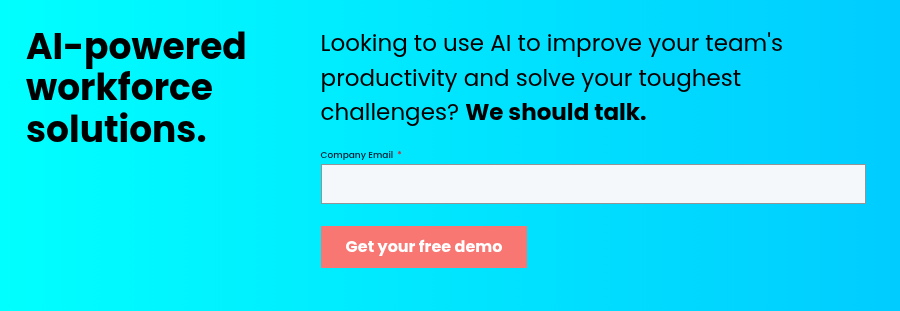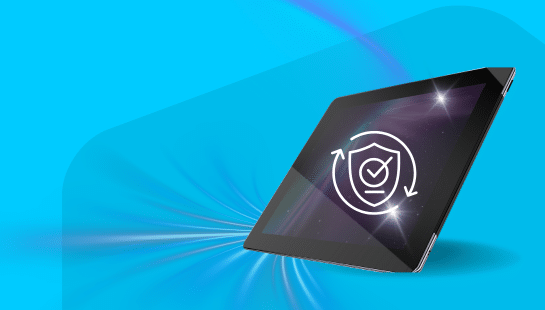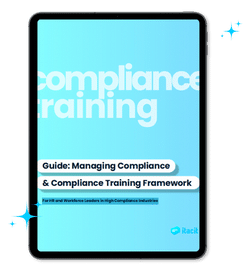AI has reshaped how frontline workers handle their daily tasks. Companies that use it have seen amazing results. Their numbers tell a compelling story – 40% lower maintenance costs, 55% boost in staff output, and 50% less machine downtime. These results show why smart businesses now put AI at the top of their priority list.
Many companies miss a huge chance to leverage frontline AI. Here’s something interesting – frontline workers make up 80% of workers worldwide. What’s even more striking is that eight in ten frontline staff can get what they need from AI right away. Only three in ten office workers can do the same. This shows how quickly frontline teams pick up AI tools compared to office staff.
AI-powered task management does more than just make work easier for frontline employees. It makes their work safer too. The US sees almost 1 million manufacturing injuries and truck crashes each year. DHL Supply Chain’s story proves this point – after they started using AI, crashes went down by 26%. This led to 49% lower accident costs. On top of that, 65% of frontline workers see AI as helpful rather than threatening. This shows how well they’ve embraced the technology.
This piece looks at how live task assignment through AI changes everything about frontline operations. It makes work safer, training better, and team talk smoother. You’ll learn about ground applications and tested ways to bring AI to your frontline teams.
How AI is reshaping frontline operations
Traditional workforce management no longer works well. Companies don’t deal very well with manual scheduling and task assignments in today’s unpredictable business world. The COVID-19 pandemic showed these weaknesses clearly and put unexpected pressure on businesses of all types.
From manual to intelligent workflows
Smart systems have replaced spreadsheets and brought a basic change to frontline operations. Manual workflows need many time-consuming steps. They use inconsistent processes and can’t adapt quickly to changes. Smart AI solutions create better schedules much faster and adapt to unexpected changes.
“The technology allows for a consistent and systematic approach, eliminating human bias and error, creating fairer planning schedules, and reducing the managerial bandwidth required,” notes McKinsey’s research on smart scheduling.
This change goes beyond basic automation. AI rebuilds workflows from scratch and sets new standards for productivity, accuracy, and safety. AI doesn’t just digitize existing processes – it completely changes how work gets done.
A North American telecom provider achieved 80-85% accuracy in forecasting by using AI predictions daily. A US electric and gas utility used a machine learning schedule optimizer that created automatic schedules. This improved field productivity and reduced schedulers’ work.
The best AI systems use a building-block approach. They break optimization into smaller steps to work more efficiently. User-friendly interfaces make adoption quick and lasting. These include drag-and-drop schedules, pre-loaded AI plans, and metric dashboards.
The rise of AI-powered task management for frontline employees
AI task management has changed how frontline employees handle their work. These systems look at huge amounts of data and find insights human managers might miss.
AI-powered work order management sets task priorities based on three key factors:
- Each task’s urgency
- Risk factors
- Available technicians and their skills
Smart prioritization helps teams handle critical issues first and work more efficiently.
AI makes work instructions better by updating them based on live conditions. To name just one example, warehouse workers use voice-picking systems with natural language processing. These systems give hands-free instructions that reduce paper use and mistakes.
“AI-driven Connected Worker platforms are revolutionizing frontline operations by combining real-time data processing, predictive analytics, and mobile-first execution,” notes a study on frontline AI implementation.
Companies using these platforms report big improvements in efficiency and safety. McKinsey reports that predictive maintenance systems looking at sensor data can reduce equipment downtime by 30–50%.
In spite of that, leadership and frontline workers have different AI skill levels. BCG research shows that almost 25% of frontline employees worry about generative AI. More frequent use relates to higher confidence and less worry.
iTacit’s AI HR Assistant helps close this gap by surfacing gaps in frontline-specific training. The platform can also creates individual-specific learning paths that match each worker’s needs and speed. Teams can stay current with technology changes more easily.
iTacit’s Frontline Communication Platform uses AI tools that remove language barriers. The platform helps diverse frontline teams communicate better. Workers stay connected through instant, multi-language communication, whatever their location or main language.
AI doesn’t replace humans – it makes their jobs better. AI handles repetitive tasks, provides quick access to important information, and helps with decisions. This lets frontline workers focus on tasks that need human judgment and creativity.
Organizations that use AI well in frontline operations see many benefits. They get smoother processes, lower costs, better accuracy, improved safety, and happier employees.
Key areas where AI boosts frontline efficiency
AI implementation helps frontline teams in various industries work more efficiently. Here are three innovative applications that are changing how daily operations work.
Live task assignment for frontline staff using AI technology
AI-powered task management systems have changed how work gets distributed on the front lines. These platforms look at data from multiple sources to prioritize tasks based on three vital factors: urgency level, associated risks, and technician availability and skills. Teams can handle the most critical issues first through this smart prioritization.
Communication during shifts has become more efficient with live activity feeds. Mobile apps now deliver essential shift updates, resources, and tasks directly to frontline staff. The automated shift-swapping features let them handle shift changes without needing supervisor approval.
AI’s ability to monitor task completion as it happens marks significant progress. Managers get immediate feedback to adjust operations quickly when needed. AI automatically creates reports at the end of shifts with attendance, task completion, and shift summaries. This makes team handovers quick and precise.
iTacit’s Frontline Communication Platform shows this approach by removing language barriers and getting more involvement from frontline teams of all backgrounds. Their system enables instant, multi-language communication that keeps workers connected whatever their location.
Predictive maintenance and downtime reduction
Equipment failures cost companies heavily. Manufacturing plants typically lose between 5% and 20% of production capacity due to equipment failure. Stalled production can cost automotive plants USD 695 million yearly.
AI-powered predictive maintenance fixes this issue by analyzing sensor data to spot failures before they occur. The results speak for themselves:
- Downtime reduction of 30-50%
- Machine lifespan extension of up to 40%
- Maintenance cost reduction of up to 25%
- Maintenance staff productivity increase of 55%
BMW’s plant in Regensburg, Germany proves these benefits. Their in-house machine learning models create heat maps that show fault patterns. This saves maintenance teams more than 8 hours of disruption yearly at just one plant.
A BMW data scientist explains, “Optimal predictive maintenance not only saves us money, it also means we can deliver the planned quantity of vehicles on time, which saves a huge amount of stress in production”.
Moving from reactive “fix-it-when-it-breaks” approaches to informed maintenance planning gives companies an edge. Yes, it is surprising that two-thirds of manufacturers still use run-to-fail or time-based maintenance strategies despite their high risk.
AI-driven quality control in manufacturing
AI shows its strength in quality control. Computer vision-equipped AI systems watch products during manufacturing constantly. They catch defects human inspectors might miss due to tiredness or limited perception.
These systems check product images on assembly lines and flag problems more accurately than human inspectors. AI spots tiny defects that humans would find almost impossible to catch consistently.
Audi’s use of AI for quality control of spot welds at its Neckarsulm plant in Germany highlights the practical benefits. Workers had to check weld quality manually using ultrasound, with random sample testing before AI. After adding machine vision, labor costs for these inspections dropped by 30-50%.
AI quality control brings several benefits:
- Less human error from fatigue or rushing
- Better brand reputation through consistent quality
- Improved regulatory compliance by catching issues early
- Reduced waste by stopping faulty parts from reaching downstream manufacturing
Frontline operations will clearly include these AI solutions going forward. iTacit’s AI HR Assistant shows that giving frontline-specific training helps workers adapt to and benefit from these new technologies.
Improving safety and compliance through AI
AI technologies now play a vital role in protecting frontline workers, making workplace safety a top priority across industries. AI systems save lives and reduce costs by predicting and preventing accidents before they happen in construction sites and manufacturing plants.
Monitoring risky behaviors in real time
AI-powered cameras scan work environments continuously to detect unsafe behaviors that human supervisors might miss. These systems identify workers who bypass safety barriers, fail to wear protective equipment, or take unnecessary risks. Computer vision systems detect these behaviors without wearable devices and see people and machinery as objects rather than identifying specific individuals.
Toyota shows how effective this approach can be. The company’s AI-driven computer vision monitors assembly lines to spot unsafe worker behavior as it happens. Companies that implement these systems report up to 40% fewer unsafe events in just one week. After three months, these numbers drop to only 20% of the original measurements.
These monitoring systems give organizations several advantages:
- Round-the-clock oversight that surpasses human supervisor capabilities
- Faster and more consistent hazard detection compared to human observation
- Data collection that reveals safety trends and patterns over time
Intenseye’s Behavioral Safety solution shows these capabilities by detecting specific risks like unsafe climbing, electrical panel contact, improper stair use, and workers in down positions. The system creates a more objective safety environment by eliminating human bias from safety observations.

Reducing workplace accidents with AI alerts
AI systems do more than just monitor – they send instant alerts when dangerous situations develop. AI-powered sensors detect workplace hazards like spills, gas emissions, equipment malfunctions, or safety violations and alert supervisors or workers immediately.
DuPont’s AI-integrated IoT sensors monitor gas and air quality at chemical plants, which allows early intervention before harmful substances affect workers. Rio Tinto uses wearables to track employee fatigue levels, providing insights into sleep quality and helping assess potential fatigue-related hazards.
The real-life effects are significant. AI predicts which facility areas face higher accident risks based on past patterns, so safety teams can take preventive measures. This transformation from reactive to proactive safety management changes how companies protect their workforce.
AI-powered incident management systems make response times faster. Natural language processing systems let workers report issues through voice and text and get near real-time responses. AI also speeds up root cause analysis, which helps organizations identify and fix the underlying factors behind safety incidents quickly.
Ensuring protocol adherence through AI assistants
AI assistants revolutionize compliance management by helping frontline workers follow procedures consistently. This feature solves a common frontline operations challenge: staying compliant as requirements change. AI systems track safety metrics in real time, identify potential compliance issues, and create reports for regulatory agencies. They also monitor air quality, noise levels, and waste disposal practices to stay within legal limits.
iTacit’s helps workers master safety protocols through personalized learning paths. The solution’s AI HR Assistant offers immediate guidance, which makes following proper procedures easier in high-pressure situations. The company’s Frontline Communication Platform gives workers instant access to safety information and breaks down language barriers that often compromise safety compliance.
The advantages go beyond simple compliance. AI assistants make documentation easier, track regulatory submissions, and monitor forms by flagging missing information or upcoming expirations automatically. These systems can even predict potential compliance issues by analyzing patterns in past non-compliance data.
A healthcare organization used an AI system to improve compliance management by analyzing patient data, insurance claims, and employee actions. They reduced non-compliance incidents by 40% within six months. Such results show why AI-powered compliance tools have become essential for frontline operations.
Personalized training and onboarding with AI
AI completely changes how frontline workers learn and develop their skills. Traditional training methods that treat everyone the same don’t work well anymore with today’s diverse workforce. AI revolutionizes this by creating individual-specific experiences that suit each employee’s unique requirements.
AI-powered learning paths for new hires
AI-driven training platforms look at employee data to create custom training trips. These systems look at factors like previous work experience, job role, and learning priorities to build relevant training modules. The numbers tell the story, companies using AI-powered learning see a 40% reduction in time-to-productivity. Their onboarding time drops from five days to just two.
“By focusing on the human performance outcomes of learning, rather than just skills delivery, companies can support onboarding that arranges more closely with employee needs, priorities, and roles,” notes the Deloitte Insights 2024 Human Capital Trends report.
This personalization happens through:
- Adaptive content sequencing based on role, location, and experience
- Bite-sized learning modules delivered at the right moment
- Up-to-the-minute nudges sent through channels employees already use
AI does more than just present information. It assesses each new hire’s existing skills, spots knowledge gaps, and recommends specific training to fill those gaps. Cornerstone’s AI-driven platform shows this well, achieving a 25% boost in employee efficiency through learning during work.
Virtual simulations and immersive learning
Practicing complex tasks without real-life consequences becomes possible with immersive learning technologies. These tools create realistic, interactive environments using virtual reality (VR) and augmented reality (AR). Employees practice safely in these environments.
“Every detail in the simulation has to be correct. It has to be real,” explains Vrålstad. This focus on authenticity works well, companies report completion rates exceeding 95% for mandatory training done through immersive platforms.
These tools prove especially valuable in high-risk industries. Workers practice dangerous scenarios repeatedly without physical risk and build muscle memory and confidence faster. They prepare for real-life challenges before facing them, from operating complex machinery to handling emergencies.
The advantages go beyond practical skills. Training becomes more engaging with immersive learning, which improves knowledge retention better than traditional methods. Companies struggling with recruitment and retention find that innovative technology training programs help attract and keep workers.
Reference: iTacit’s AI HR Assistant for frontline training
iTacit’s AI HR Assistant marks a major step forward in frontline training. The platform gives employees instant, secure access to company policies, SOPs, and training documents. Workers ask questions and get clear, role-specific answers pulled straight from their organization’s knowledge base.
The results speak for themselves. About 87% of users say the AI Digital Assistant helped them find answers more easily than before. Management teams save around 4.5 hours weekly by reducing repeated questions.
The system’s value comes from knowing how to provide role-specific information. It gives reliable answers based only on an organization’s internal knowledge, including training materials, SOPs, and policies. Frontline workers can quickly bridge the gap between training and real-life action with fast, searchable support.
The system’s dashboards reveal what employees search for most, which helps identify gaps in training and policy clarity. Organizations can strengthen content exactly where workers need more support. This creates an ongoing feedback loop that makes training better over time.
Companies modernizing their frontline operations find these AI-powered training tools essential to building capable, confident teams that adapt well to change.
Enhancing communication and knowledge access
Poor communication hits businesses hard in the wallet. About 2.8 billion workers worldwide need better ways to find company information. This gap creates expensive problems and frustrates employees, but AI solutions now help solve these issues.

AI chatbots for instant answers
AI chatbots help frontline staff get vital information right away without digging through manuals or asking managers. These virtual assistants handle everything from product details to pricing and inventory levels.
This makes a big difference in business. AI-powered virtual assistants in hospitals have cut administrative burdens by up to 30%, which lets staff spend more time with patients. Staff who spend less time on paperwork and more time with people end up happier, and customers get better service.
These chatbots stand out from older versions. Modern AI chatbots:
- Give context-aware responses instantly
- Learn from past interactions to improve accuracy
- Handle routine questions so workers can tackle complex problems
- Work 24/7, unlike human support staff
“Spoiler alert: these advancements are strengthening industries by delivering verified real-time knowledge, automating repetitive tasks, and improving critical decision-making on the spot,” notes one industry report.
Natural language interfaces for non-desk workers
Natural Language Interfaces (NLIs) have changed how frontline employees use company data. Workers just ask questions in plain English and get quick answers, instead of dealing with complicated technical queries.
Young workers particularly dislike calling service desks and prefer to find answers themselves. NLIs give them this option while solving problems faster.
The system processes natural language inputs, spots what users want, and pulls relevant data from complex datasets. These systems get smarter with each interaction and adapt their responses to match what users need.
Orange Business Services’ voice-enabled support shows real benefits. Their system uses voice recognition and natural language processing to solve common issues automatically. Each agent call costs between $20-30, making the monthly license fee look like a bargain.
AI-driven personalized interfaces will be in 30% of new applications by 2026, up from less than 5% today. Companies are adopting these tools because they make enterprise data easier to access and help teams work faster.
Reference: iTacit’s Frontline Communication Platform
iTacit’s Frontline Communication Platform shows what next-generation AI-powered workplace tools can do. Teams can connect without company email addresses, a huge plus for frontline staff.
The platform tackles everyday challenges through:
- Mobile-first design that works on personal devices
- Digital processes and task automation
- On-the-go forms and checklists
- Conditional logic and smart task assignments
iTacit’s new AI Assistant gives frontline workers instant, policy-aligned answers. Employees can now access company information from anywhere, which streamlines workflows and reduces device switching.
The platform has a social intranet built specifically for frontline teams. This feature builds company culture and connects people in a secure, branded space.
The benefits go beyond just making things easier. Organizations build loyalty and trust by putting everything in one internal communication app that employees download from app stores. They also see better participation because workers actually want to use the tool.
AI-driven tools help global operations by breaking down language barriers and boosting engagement across diverse frontline teams. As frontline AI grows, these communication platforms will become crucial for keeping scattered workforces connected.
Empowering decision-making with real-time insights
Evidence-based insights are the life-blood of frontline management that works. 86% of companies report their frontline teams need better insights to make good decisions. Companies from all sectors now consider AI solutions a top priority.
AI dashboards for shift leaders
Leaders on the floor now use AI-powered analytics dashboards. These tools provide operational insights in real time and help them identify problems early. The dashboards monitor several important metrics:
- Employee productivity and task completion
- Team participation levels
- Equipment performance
- Process bottlenecks
- Sentiment analysis
Sentiment analysis through AI proves a breakthrough innovation. The system learns about employee sentiment through their digital interactions without surveys. Leaders can quickly fix morale issues since poor frontline spirits directly lower performance and lead to higher turnover.
Numbers tell the story – 72% of companies that invest in tech-enabled frontline insights see better productivity. These tools build positive workplace cultures by showing teams their voice counts.
iTacit’s Frontline Communication Platform shows this approach in action. The platform offers analytics that measure participation through different channels and locations. Leaders can compare their performance with industry standards.
Inventory and supply chain visibility
Organizations use AI-powered solutions to monitor their supply chain in real time, from raw materials to finished products. Frontline teams can spot bottlenecks, track inventory, and find better delivery routes.
Warehouse workers benefit from voice-picking systems with natural language processing. These systems give hands-free instructions about item locations and picking sequences, which reduces paper use and mistakes.
Digital twins create virtual copies of supply chain processes. They use IoT device data to monitor operations and predict issues. The core team can spot potential problems before they disrupt operations.
Reducing human error in ever-changing environments
Businesses lose money from human errors in busy frontline environments. AI helps solve this challenge by watching data entries and finding unusual patterns that might show mistakes like wrong inputs.
AI offers specific suggestions to fix potential problems. Manufacturing operations use AI to check images, sensor readings, and other data. The system finds defects with impressive accuracy.
AI can run different scenarios to help decision-makers understand the risks of various choices. Companies that use AI report 30% better process efficiency.
The best part might be how AI gives context-specific help when frontline workers need quick answers. iTacit’s AI HR Assistant shines here – it gives instant, policy-based information that helps workers make confident decisions quickly.
Overcoming barriers to AI adoption on the frontline
AI brings many benefits, but frontline technology implementation faces unique challenges. Organizations need to tackle three major barriers that slow down progress.
Addressing job security concerns
Frontline workers have valid concerns about their future. More than four in ten worry that AI technologies might take their jobs within the next decade. These fears aren’t baseless – AI will change half of all jobs. Companies that rush implementation without addressing these concerns face serious problems. Workers who worry about losing their jobs are 27% less likely to stay with their employer.
Smart organizations tackle these fears through direct conversations. “When workers feel they have a say in adopting new technology, they tend to participate more positively,” explains Kate Field from BSI. Freudenberg gets teams involved early in tech integration and gives workers ownership of the process. Clear communication about AI’s purpose builds trust and reduces resistance – it optimizes processes rather than replaces people.
Training frontline staff to use AI tools
Staff faces several obstacles with AI adoption. They lack time to learn tools, receive poor training, and don’t know when to use them. More than half of frontline workers adapt to digital tools without proper preparation. The situation becomes more complex as 98% of employees believe they need new skills because of AI.
The best training methods work well together. Organizations should pick champions who receive extra training to help their coworkers. Regular Q&A sessions and refresher courses complement the original training. Teams need to understand how systems work, not just how to operate them.
iTacit’s AI HR Assistant helps solve these problems. It provides quick answers to policy questions and saves management teams about 4.5 hours each week.
Ensuring data privacy and transparency
Privacy concerns grow as AI handles sensitive information. These systems depend heavily on personal data, which makes privacy protection crucial. Unauthorized data usage creates serious problems about individual privacy rights.
Organizations should create stricter rules about data usage. Users need complete information about how companies manage their data. Companies that stay transparent about data practices avoid regulatory problems like those in Italy and Japan.
iTacit’s Frontline Communication Platform creates secure channels that protect sensitive information while allowing necessary knowledge sharing. Teams build trust through open discussions about data security concerns, which helps successful adoption.
Measuring ROI and long-term impact of AI
The financial benefits of AI implementation play a vital role in technology adoption strategy. Companies that update their KPIs with AI see three times more financial returns compared to others.
Key performance indicators to track
The right metrics help calculate AI’s real effect. Companies should focus on these measurable factors:
- Cost savings: Calculate reductions in labor, resources, or operational expenses
- Revenue growth: Assess how AI improves sales, customer acquisition, or retention
- Efficiency gains: Measure improvements in speed, accuracy, or productivity
- Time to full adoption: The speed at which staff moves from training to daily use
Smart KPIs do more than monitor past results – they predict future outcomes and suggest ways to improve. Companies that use AI to create new KPIs (34% of all respondents) see better teamwork, financial gains, and efficiency.
Research by MIT and Boston Consulting Group shows 70% of executives believe improved KPIs and performance boosts drive business success. Companies that make use of AI-informed KPIs are 5x more likely to see better coordination between departments.

Case studies: DHL, Siemens, ConGlobal
DHL Supply Chain shows real-world AI applications in its operations. Their data cleansing tool helps the Solutions Design team handle customer data faster, which speeds up market entry. The company’s sales teams use AI to analyze customer needs quickly and create accurate proposals.
AI helps DHL’s legal and customer service teams summarize queries and process documents. “These AI-driven tools are not just technological novelties, but practical applications aimed at transforming key business processes,” says Sally Miller, Global CIO at DHL Supply Chain.
Aligning AI with business goals
Clear objectives set the foundation for successful AI implementation. Companies need to know their goals and why AI works better than other technologies. To name just one example, AI-powered predictive maintenance becomes the perfect solution when reducing maintenance costs is the goal.
A well-laid-out integration process helps employees adapt and maximizes investment returns. The eight-step AI integration process starts with problem identification, readiness assessment, and tool selection. It then moves through testing, deployment, scaling, and governance.
iTacit’s AI HR Assistant shows this alignment by giving quick answers from an organization’s internal knowledge. This helps frontline workers make better decisions and saves management about 4.5 hours weekly. iTacit’s Frontline Communication Platform breaks down communication barriers through AI-powered tools that line up with business objectives.
Conclusion
AI for frontline operations has moved from theory to ground application with measurable results. This piece shows how AI technologies revolutionize daily tasks, safety protocols, training methods, and communication systems in industries of all types.
Numbers paint a clear picture. Companies using AI-powered predictive maintenance reduce costs by 40%. Their staff’s efficiency jumps by 55%, and machine downtime drops by 50%. DHL saw crashes drop by 26% after they started using AI safety systems. These numbers represent real business outcomes that boost both profits and worker wellbeing.
Something unexpected emerged. Frontline staff pick up AI tools faster than office workers do. Eight out of ten frontline employees find what they need on their first try. This fact challenges what many believe about technology adoption and shows AI’s practical value in hands-on roles.
AI brings its share of challenges. Companies that tackle job security fears, give proper training, and protect data privacy gain the upper hand. Those who update their KPIs with AI become three times more likely to see better financial returns than others.
On top of that, AI breaks down language barriers. iTacit’s frontline communication platform connects teams of all backgrounds, whatever their location or first language. Workers get instant access to vital information without searching manuals or waiting for supervisors.
Success depends on finding the right balance between technology and human needs. Workers worry AI might take their jobs. Yet 65% see AI as a helpful tool rather than a threat. This mindset changes when companies explain AI’s real purpose – making processes better, not replacing people.
iTacit’s AI Assistant for HR shows this balanced approach. The system answers policy questions right away and saves management teams about 4.5 hours each week. It helps frontline workers connect their training to real-life action with quick, searchable support.
AI works best when it enhances human capabilities instead of replacing them. Workers can focus on tasks that need judgment, creativity, and people skills while AI handles routine work. This partnership creates operations that run smoother, safer, and better for everyone.
Smart organizations will gain an edge by carefully merging these technologies while supporting their people. The future of frontline operations isn’t about machines taking over – it’s about building powerful partnerships that improve everyone’s work life.










